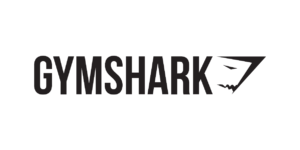Stitch Fix is an online styling service for women who are busy or need a change in their wardrobe. Each customer takes a style quiz and is assigned a personal stylist. The stylist picks out five personalize items that the customer would want to wear and sends them to the customer. There Is a $20 styling fee with every box to cover the stylists’ expertise and time. After trying on every product, the customer can return them for free or use the $20 dollars towards the clothes they want to purchase.
Stitch Fix was founded in 2011 by Katrina Lake. She started the company after her sister was her personal stylist and knew there was a market for women who needed or wanted fashion advice. She was attending Harvard when she shipped the first Stitch Fix box. When she first founded the company, they were only helping women but realized there was also a market for men. In 2016, they launched personalized boxes for men and offered plus sizes in 2017. As of 2020, they style men, women and children.
Stitch Fix’s mission as a company is to “change the way people find clothes they love by combining technology with the personal touch of seasoned style experts”. They take pride in knowing that each box is personalized for each client and that the personalized items can help them build their style. Lake’s goal when founding Stitch Fix was to help women discover their style and feel confident in what they wear.
Since Stitch Fix started, their sales have only gone up, making the company well-known and successful. They have over 2 million customers in the United States alone. Their sales and number of customers have gone up since the beginning of the pandemic. Their sales went from $370.3 million, a year ago, to $451.8 million in the second fiscal 2020, ending February 1st. Many people have been turning to stitch fix for fashi on styles and clothing pieces during the pandemic, instead of going to stores.
on styles and clothing pieces during the pandemic, instead of going to stores.


 Many people can recognize that Moziah is an inspiring entrepreneur because of his young, passionate success. However, they may not know that Moziah also has a redemptive entrepreneurship aspect of his company. His favorite bow tie is the Go Mo Bow because 100% of the proceeds are donated to help kids afford summer camp. Moziah recognized that the summer time is when child hunger is at it’s highest, and he believes in the importance of kids going to summer camp and having a fun time.
Many people can recognize that Moziah is an inspiring entrepreneur because of his young, passionate success. However, they may not know that Moziah also has a redemptive entrepreneurship aspect of his company. His favorite bow tie is the Go Mo Bow because 100% of the proceeds are donated to help kids afford summer camp. Moziah recognized that the summer time is when child hunger is at it’s highest, and he believes in the importance of kids going to summer camp and having a fun time.


